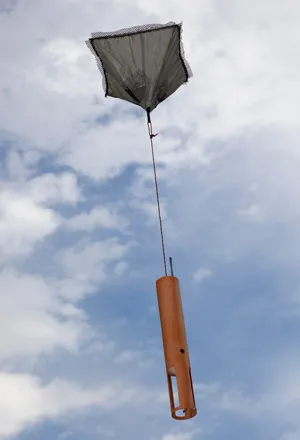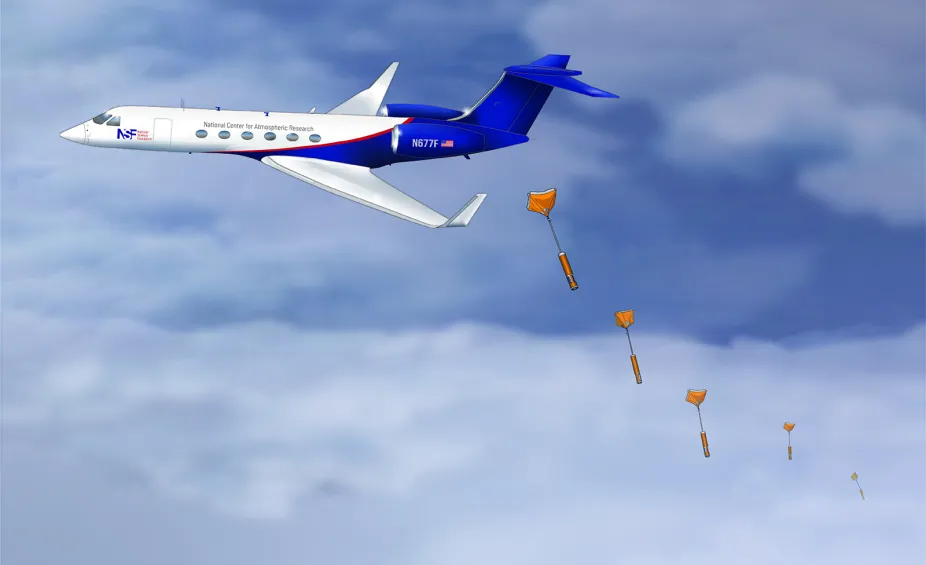Exploring the Atmosphere with Dropsondes

A dropsonde (brown tube at the bottom) descends beneath a small parachute.
UCAR
Let’s say you would like to know how temperature, wind, air pressure and humidity vary throughout a hurricane. This information could help you know whether the hurricane is growing stronger and which direction it is heading. But hurricanes are dangerous storms. It's hard to get inside them. One way to get that information safely is to use dropsondes.
Dropsondes are packages of instruments tethered to little parachutes. Dropped from planes, dropsondes are designed to fall slowly, sending reports by radio signal about their location and the atmosphere around them as they fall.
Small planes that are designed for scientific research can often fly into areas above and near storms, but they can’t fly into the most turbulent parts of the storm. Those areas are interesting to study, but very unsafe for airplanes. That’s why dropsondes are important for collecting data about the storms. Dropsondes head into the center of storms where most planes can’t go. NOAA’s Hurricane Hunters and many research projects studying weather and air pollution use dropsondes to collect data about the atmosphere.

A research airplane like the NSF/NCAR Gulfstream-V can fly above a storm and release dropsondes that fall to the ground, collecting data about the storm along the way.
UCAR
The instrument package, called a sonde, is attached to a small parachute, which looks like an overturned camping tent and is about a foot wide. The parachute is specially designed to make the sonde fall slowly and to ensure that the instruments stay vertical as they fall. It takes a dropsonde about 15 minutes to fall to the ground from a height of 14 km (about 46,000 feet). Some are dropped from much higher than this. Others are dropped from much lower altitudes, depending on the part of the atmosphere that researchers are studying. The instruments within the package report data twice every second during the fall.
Dropsondes were first developed at the National Center for Atmospheric Research in the 1970s. Today, engineers are developing new designs that are lighter and less expensive. New designs are tested in wind tunnels to make sure they are stable without spinning too much and to make sure they fall at just the right rate - not too fast, which would mean there is less time for the instruments in the sonde to collect data, and not too slow, which would allow the dropsonde to drift off course.
The instruments in dropsondes are also used in weather balloons. Hundreds of weather balloons are launched daily, carrying sondes upward. The first radiosondes - sondes with radio transmitters to send back data - were flown on balloons in 1929-1930. Earlier still, during the latter part of the 19th century, scientists attached weather instruments to kites.